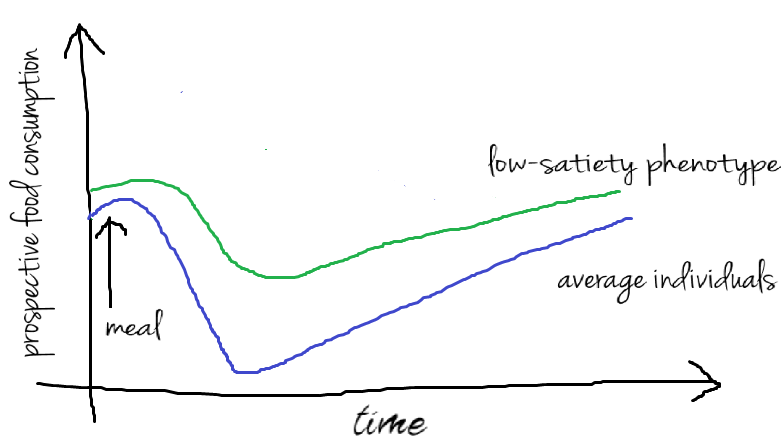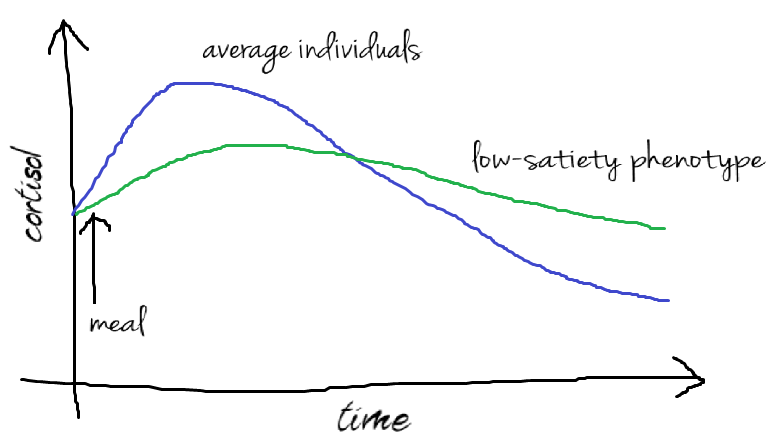Understanding the Low-Satiety Phenotype: Appetite and Satiety
Written on
Chapter 1: The Mystery of Satiety
In this discussion, we delve into the enigma of why some individuals feel an ongoing urge to eat even after finishing a meal. Recent studies by appetite specialists have revealed that approximately 10% of people living with obesity report never feeling full, struggling to recognize when they should stop eating.
These individuals describe their experiences as follows:
- "I can’t detect changes in my appetite throughout the day."
- "I have a weak sense of fullness after meals."
- "My appetite increases even after eating."
- "I eat regardless of my actual hunger."
Researchers categorize these individuals as having a "low-satiety phenotype." In previous writings, I have discussed the phases of appetite regulation for the majority of healthy individuals who can sense variations in their feelings of fullness.
This segment will focus on the specific group of individuals who rarely feel satisfied after consuming regular food portions.
Section 1.1: Understanding the Low-Satiety Phenotype
Comparing those with a low-satiety phenotype to average individuals, it is evident that the former feel less satisfied after consuming the same meal. Consequently, these individuals tend to ingest more calories before they decide to stop eating. Researchers utilized a Visual Analogue Scale (VAS) to assess how these individuals rate their feelings of hunger and fullness before and after meals.

In this study, appetite scientists sought to determine how those with a low-satiety phenotype perceive their appetite in comparison to a control group of average individuals after eating a standardized meal. Interestingly, both groups reported similar feelings regarding hunger, fullness, and desire to eat. However, when asked about prospective food consumption—"How much do you think you can eat right now?"—those with a low-satiety phenotype consistently indicated they could consume significantly more at any given time.

Further research demonstrated that individuals with a low-satiety phenotype struggle to accurately perceive changes in their feelings of fullness after meals. While they reported lower hunger levels when fasting, their hunger increased after eating, indicating a diminished sensitivity to appetite cues. This inability to recognize satiety can lead to difficulties in managing food intake, resulting in higher caloric consumption during buffet-style meals compared to average individuals.
In long-term studies, those with a low-satiety phenotype showed less success in weight loss efforts. However, the same research indicated that adopting a satiating diet could enhance their weight loss outcomes. Thus, it is crucial to assist individuals with a low-satiety phenotype by providing them with meals rich in satiating foods.
Section 1.2: Characteristics of Hunger-Suppressing Foods
Many foods, particularly ultra-processed options, lack the qualities that contribute to feelings of fullness.
Chapter 2: Biological vs. Psychological Factors
So, what drives the inability to sense satiety—biological or psychological factors? Early research suggested that the low-satiety phenotype might stem from issues with cortisol secretion. Cortisol, a hormone associated with stress, typically rises shortly after a meal and decreases afterward. However, those with a low-satiety phenotype exhibited a muted cortisol response.

The expectation is that the levels of satiety hormones (like GLP-1 and PYY) and hunger hormones (such as ghrelin and leptin) would differ between low-satiety phenotype individuals and the average population. Yet, recent studies have shown no significant differences in these hormone fluctuations between the two groups. While many believe that appetite is largely governed by these hormones, scientific findings do not consistently support this notion.
What does true satiety feel like? This question invites deeper reflection. Individuals with a low-satiety phenotype may have normal levels of circulating hunger and satiety hormones, but they do not feel satisfied in the same way others do.
Concluding Remarks
In conclusion, a small percentage of individuals are unable to adequately gauge their feelings of fullness. The reasons behind this could be rooted in biological or psychological factors, and we may be overlooking novel mechanisms, such as the sensitivity of hormone receptors.
There are extreme cases, such as Prader-Willi syndrome, which leads to a complete loss of the ability to feel satiated, though this condition is beyond the scope of this discussion.
As a therapist, I find evidence suggesting that supporting patients with foods that promote satiety can aid in better weight management. Meanwhile, research will continue to explore why some individuals struggle to recognize feelings of fullness and how to help them.
In the video titled "OZEMPIC EXPERT WARNING: 12 Risks You Need To Know | Johann Hari x Rich Roll," experts discuss the potential risks associated with the drug Ozempic, which is often used in weight management. They highlight the importance of understanding the implications of such medications on appetite and satiety.
The video "The #1 Cause Of Obesity, Diabetes & Illness Nobody Talks About | Robert Kennedy Jr & Mark Hyman" addresses the underlying causes of obesity and related health issues, shedding light on factors that may contribute to the low-satiety phenotype.